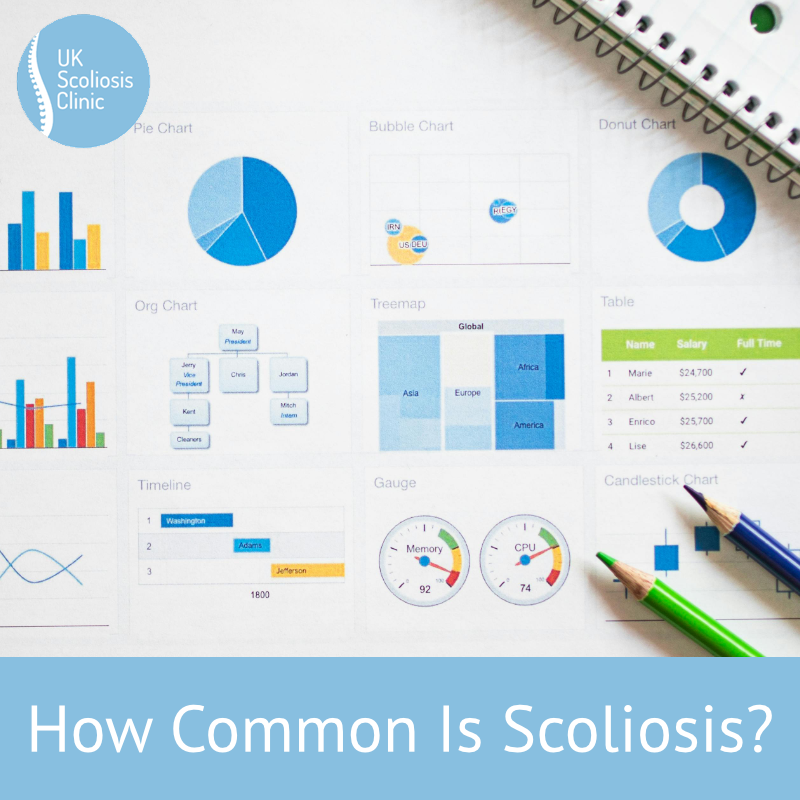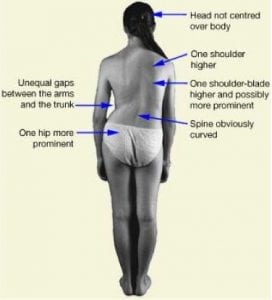
Scoliosis is a condition that affects the curvature of the spine. The spine has a natural curve, backwards and forwards, but in Scoliosis the spine curves excessively from side to side. The condition can affect people of all ages, but it is most commonly diagnosed in children and adolescents. In this blog post, we will explore how common scoliosis is and the different factors that can contribute to the development of the condition.
How Common is Scoliosis?
Scoliosis is a relatively common condition, with an estimated prevalence of 2-3% in the general population. This means that about 2-3 people out of 100 have some degree of scoliosis. The condition is more common in girls than boys, and it tends to run in families. According to the American Association of Neurological Surgeons (AANS), approximately 80% of scoliosis cases have no known cause, and the condition is often diagnosed during routine school screenings. This of course isn’t the case in the UK, since school screenings are not provided!
There are different types of scoliosis, and the prevalence of the condition varies depending on the type. Idiopathic scoliosis, which is the most common type, accounts for about 80% of all cases of scoliosis. This type of scoliosis occurs for no known reason (which means that we don’t yet know why, not that there is no reason at all!) and can develop at any age – it is most commonly diagnosed in adolescents between the ages of 10 and 18.
Another type of scoliosis is congenital scoliosis, which is present at birth and is caused by abnormal spinal development. Congenital scoliosis is less common than idiopathic scoliosis and accounts for about 10% of all cases of scoliosis in children. Neuromuscular scoliosis is another type, which is caused by underlying neuromuscular conditions such as cerebral palsy. Overall, congenital cases are a much smaller percentage of cases, but it’s still a condition which is seen fairly often.
Degenerative scoliosis is also known as adult scoliosis, and it typically develops in people over the age of 50. As people age, the discs in the spine start to wear down, and the vertebrae can begin to shift and rotate, leading to scoliosis. Other factors that can contribute to the development of degenerative scoliosis include osteoporosis, arthritis, and other spinal conditions. Degenerative scoliosis is actually the most common form of Scoliosis – as many as 1 in 3 people over the age of 60 suffer from the condition.
Does Age Contribute to the Development of Scoliosis?
The exact cause of scoliosis is unknown, but researchers have identified certain factors that may contribute to the development of the condition. While age is one of these, it’s just one of many factors. These include:
Genetics
Scoliosis tends to run in families, which suggests that there may be a genetic component to the condition. Researchers have identified several genes that may be associated with scoliosis, but more research is needed to understand the role of genetics in the development of the condition.
Gender
Scoliosis is more common in girls than boys, particularly in adolescent idiopathic scoliosis. This may be due to differences in hormonal levels or the fact that girls tend to go through growth spurts earlier than boys. This difference tends to even out in adult and degenerative Scoliosis cases.
Neuromuscular conditions
Neuromuscular conditions, such as cerebral palsy and muscular dystrophy, can also contribute to the development of scoliosis. These conditions affect the muscles and nerves that control the spine, leading to abnormal curvature.
Posture and body mechanics
Poor posture and body mechanics don’t cause Scoliosis, but they might contribute to worsening it. One group which has a particularly high incidence of Scoliosis is ballet dancers and gymnasts – one theory suggests that contorting the body as required in these activities might worsen scoliosis.
Spinal conditions
Certain spinal conditions, such as herniated discs and spinal stenosis, can also contribute to the development of scoliosis in older people. These conditions can cause the vertebrae to shift and rotate, leading to abnormal curvature.



